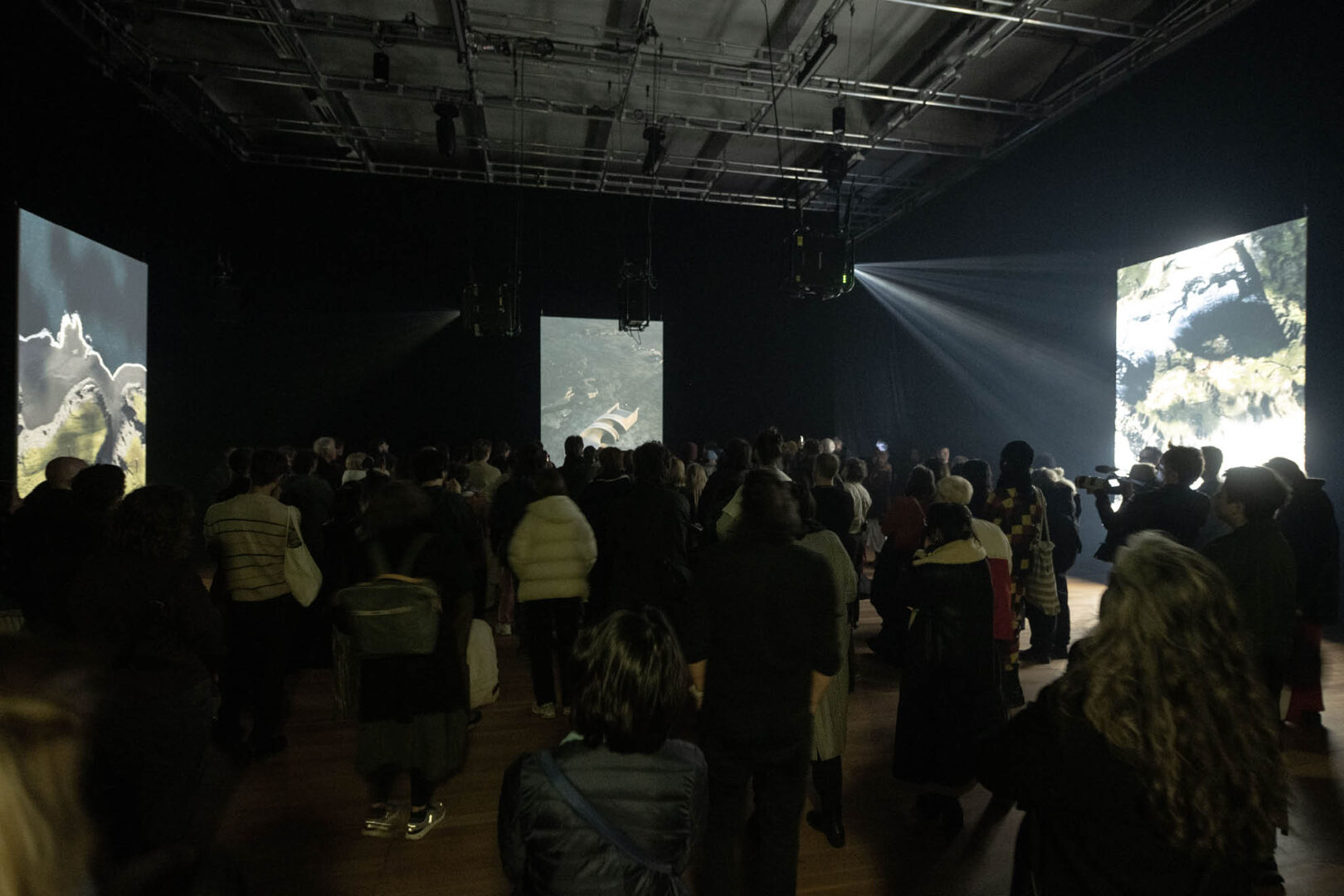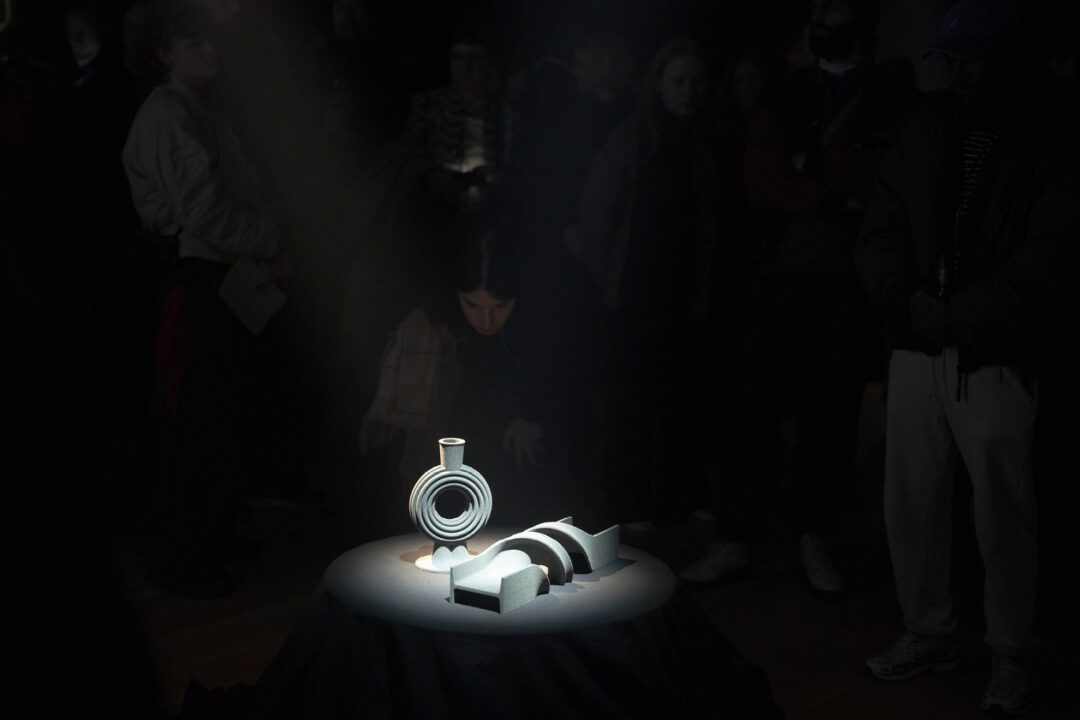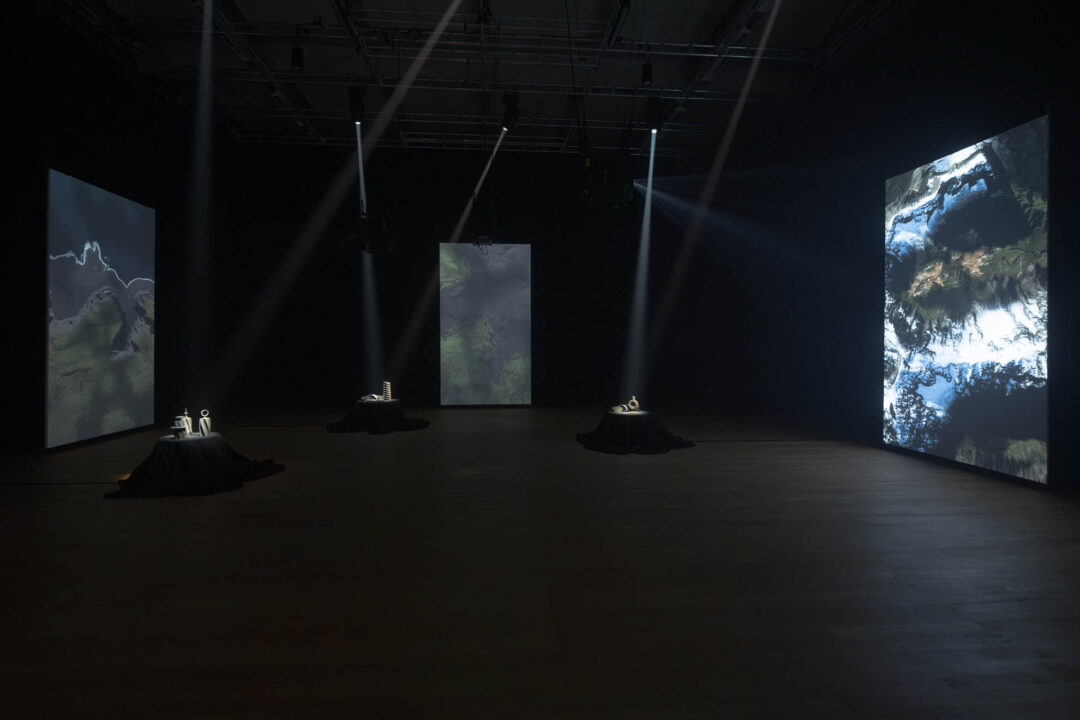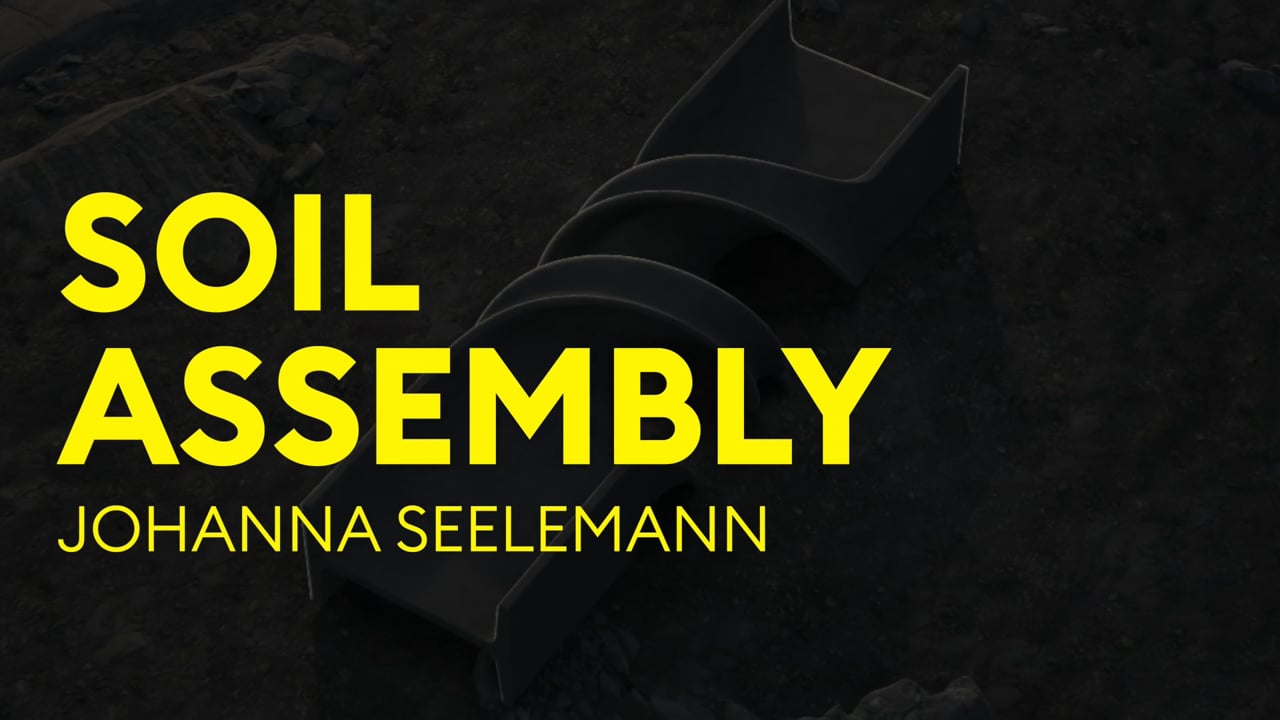Text: Will Jennings
Photos: Camille Blake

The field of design is expanding. While we understand designers as those who create the furniture, objects, tools, and systems we use in our everyday lives, some designers think bigger and deeper into the future, with the field of speculative design serving as a framework for such imagining. “A good way of defining what design does is that it can shape people’s behavior; it defines a certain relation we have to the world and how we interact with the world,” Johanna Seelemann says of her relationship to a field that’s engaged with pushing boundaries, forging new perspectives, and imagining potential solutions to our future’s ecological needs.
As half of the New York-based studio Dunne & Raby, Fiona Raby is a co-author of the 2013 book Speculative Design, which Seelemann deems “the Bible of the design field—a very simply written, well explained story of where this whole idea of speculative design comes from.” Seelemann found out about Forecast through Raby’s Instagram account, who she’d been following for many years. It turns out Raby was also an Instagram follower of Seelemann’s, so when the two met for the first time at the Forecast Forum in August 2024, there was familiarity with each other’s practice—though neither knew then that the following few months would be such a period of strong collaboration and intertwined research. Speculative design can start with creative narratives as ways of searching for as-yet-unknown outcomes. As a prospective mentee, Seelemann showcased her research with a performative provocation suggesting experimental new methods of farming, nutrient production, and tools to build new soil ecosystems. It was a way of emphasizing the complexity and richness of soils, and a gesture towards imagining new relationships between the soil and us humans. “We have had the same farming practices for 10,000 years, maybe we should reconsider,” says Seelemann.
Performing Design
The performative aspect proved both challenging and inspiring. “We had a theater director who could assist us, helping us construct the storyline,” the designer recalls. “Then we had a stage manager, light technicians, and all the people you would need if you work performatively—we learned a lot!” Forecast can take practitioners out of their comfort zone, and for a designer more used to reading, drawing, and studio-based practices, Seelemann was pushed to expand her way of thinking. A circle of soil was projected onto Radialsystem’s floor, an enlarged video detail of not only soil but the insects, worms, microbes, and diverse materials that make up the earth we humans often take for granted.
The film showed just how full of life soil is, while a performer walked over the projection in lightweight sledge-like shoes, presenting minimal contact with the floor. The shoe-as-tool took inspiration from Southern French shepherds who historically navigated uneven terrains on stilts, allowing high vantage over their flocks. A crackling sound playing in the background was recorded using a geophone, a microphone designed to record vibrations of the earth. This approach to exploring design was a reason Raby relishes her Forecast mentorship. “It’s a world I know very little about,” she says, “and having the opportunity to consider design objects within a performative context is something I was very curious to learn.”
Seelemann had already been working on projects looking at German farming practices and the intent had been to link these parallel projects with new research for Forecast. But having been awarded with the mentorship, she realized that the platform offered unique opportunities to go further and design projects “not bound to any client, and into a certain kind of imaginative space.” It also offered her the opportunity to move the project away from German soil and into a more extreme landscape, perhaps more suited to future ecological imaginaries.


Iceland as Laboratory
Ahead of the Forum, Raby had plans to take her chosen mentee on a research trip to Iceland, and after selecting Seelemann the trip revealed unexpected poetic foresight. Born in Leipzig, Seelemann had initially started an interior design bachelor’s degree at Burg Giebichenstein Kunsthochschule Halle before switching to industrial design. While studying, she visited Iceland on an academic exchange, immediately enjoying the country’s approach to design education. “They were way more conceptual, they had more layers and looked at local production,” she says. She swapped school and stayed there. It started a relationship with Iceland, its landscapes, people, and processes that has remained, offering rich understanding of the place ahead of Raby’s research trip. In 2015 at the Iceland Academy of the Arts, Seelemann and fellow students conceived the Willow Project, an investigation into the destruction of the island’s forests and vegetation following the introduction of sheep, proposing willow forestation to support new industries and vernacular design cultures. A year later, for the Icelandic Research Fund, the Ministry of Icelandic Vegetables was founded by Seelemann and five other designers, exploring how wasted rutabaga crops (Swedish turnip) might be utilized to create syrup and ethanol, the root ingredients for alcohol and sugar industries, both of which currently reliant upon carbon-intensive imports.
“The Iceland study trip was immensely important and a turning point in the project,” Raby says, “taking both of us out of our everyday situations and mindsets, immersing us in a very different reality.” On a tour compressed with meetings and creative exploration, the pair examined landscapes Raby describes as “rock, lava, glaciers, ice caves, lava tunnels, and turf houses,” a territory that aided Seelemann to “disengage from rational thought and let her imagination float.”
Seelemann’s moodboard of the trip contains many landscape photographs, though they do not dwell solely on the romantic and well-known rugged Icelandic beauty. Yes, there are images of rocks, glaciers, and sublime vistas, but the designer’s eye repeatedly noticed ways in which humans worked with nature, sometimes resulting in what many may consider prosaic or ugly: Geothermal machinery puncturing the earth; solid metal hooks fixed deeply into glaciers; reindeer antlers painted with luminescence so drivers can avoid them; weather measuring units; water infrastructure; pylons; communication masts; industrial structures, and found objects that speak to an Icelandic language of place distant from the romantic. It is this language that Seelemann hopes might “consider the non-human and other-than-human, that isn’t just imitating natural process, but acknowledges our industrial histories.”
Breadth of Imagination
The shared collaborative research was suitably broad in the fields and sectors they drew ideas from, though Raby says that a designer “can never know everything. Nothing ever finishes, things can evolve and be different depending on budgets and people, possibilities are fluid.” A breadth of imagination, on the other hand, is key to what Seelemann thinks a designer is: “a person with a certain skillset to bridge different fields and channel it towards tangible propositions which are object focused, and maybe also scenario focused.” The outcomes of Seelemann’s design speculation—machines of various scales, each telling a different story—only offer a small glimpse into the journey undertaken. One important outcome of the process is, however, that Raby and Seelemann are no longer just Instagram acquaintances, but are now firmly entwined in one another’s creative processes—and who knows where that new journey might lead.

